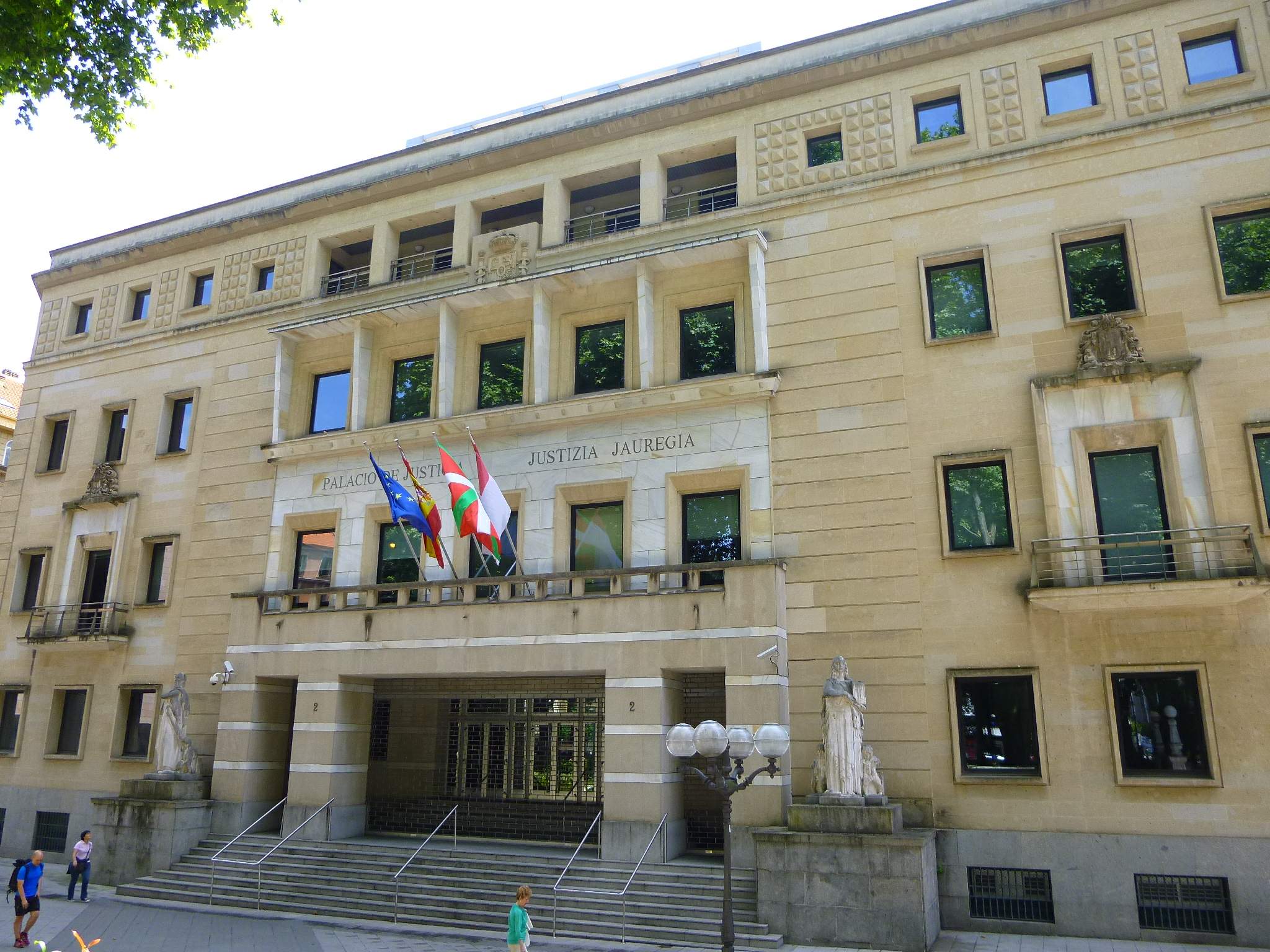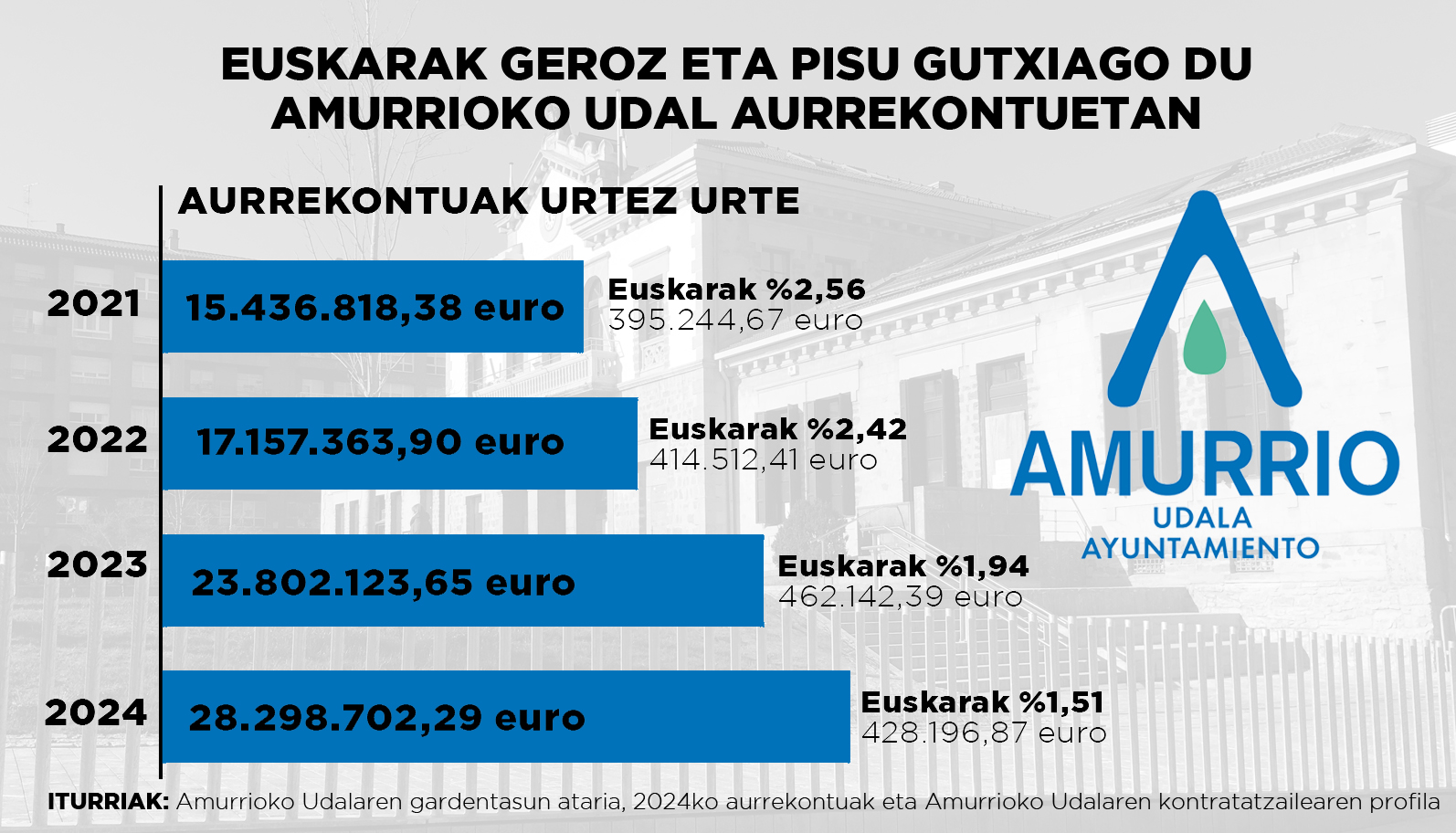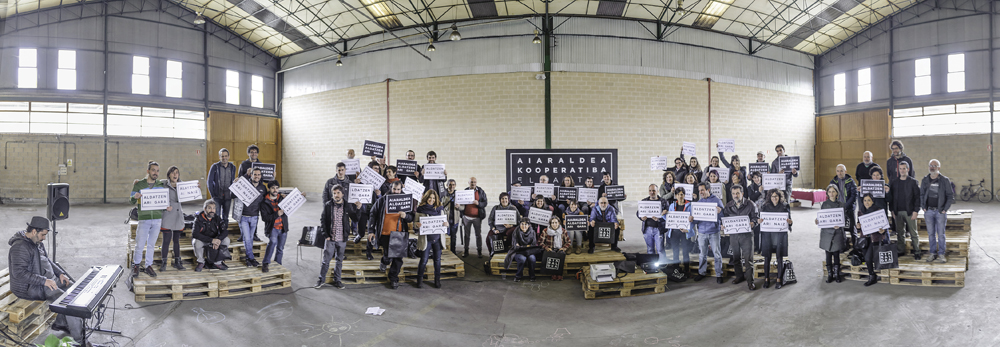"Arraia has been the center of innovation of the Basque Country in the West"
- The Doctor of Linguistics Joseba Abaitua has analyzed the extension of the Basque language in Mendialdea, where a very clear border has been found between the Basque language and romance.

Joseba Abaitua Odriozola (Vitoria-Gasteiz, 1960) went to live in Bujanda twenty-three years ago and has since been analyzing the expansion and decadence of the Basque country in the Alavesa Mountain. Last December he published in Kanpezu his studies on the history of the Basque country. According to Abaitua, from the 6th century to the 18th century in much of the Alavesa Mountain the Basque Country was mainly or almost exclusively used; moreover, the doctor believes that in the Arraia Valley the first innovations of the Western Basque Country were given. Abaitua explained to Alea, among other things, that the disappearance of the Basque country occurred "suddenly, as a result of a serious economic, social and political crisis".
Why did you begin to investigate the history of the Basque Country in the Alavesa Mountain?
When I went to live in Bujanda, I began to learn the names of the fields and the mountains, and I realized that in Bujanda, Kanpezu, Genevilla and in general there is nothing of the Basque in this valley, but there are very romantic names, developed directly from the Latin. On the contrary, I observed that the linguistic limit of Korres is very pronounced, very clear and demanding; the name of Korres is not Basque, but its small toponymy is very Euskaldun, next to the dam of the river, for example, is Aranbalza, or Borinalde, Elejalde, Elejoste and many others that are transparent reflection of the western dialect. The linguistic border between Antoñana and Atauri is also the same; between the Valley and Campezo: The valley is very Basque, Kanpezu is very romance.
"There was a serious economic, social and political crisis that led to the sudden disappearance of the Basque Country"
So you started to look at that linguistic border. What did you find?
At first I thought that this linguistic border could be related to the Kingdom of Navarre, but in view of the reflections that have been given in recent years in the history of dialectology, I think it has to do with the dissemination of the dialectal Basque. As Koldo Mitxelena and later Koldo Zuazo have pointed out, I also believe that the history of the Basque dialects began in the 5th century, after the Romans, and that from the 6th century the Basque Country had a very evident diffusion process. Moreover, Zuazo mentions that the origin of the western Basque country took place in the area of Vitoria-Gasteiz, while I believe that in the center of the Lautada, in Dulantzi.
And until then?
In my speech in Campezo, I showed a map made by the classical philologist Pilar Cipres, in which various Latin headings that have appeared in the Alavesa Plains, mostly in the third century, are collected and show that the Alavesa Plains were completely romanized. I guess the Plain would also be latinized.
How can it be that in the third century this situation exists and that in the sixth century the dialects begin and the origins of the Western Basque Country become the Alavesa Plain?
It's a very interesting story. In Joy-Dulantzi, in 2009, a 6th century pre-Hispanic basilica was discovered. In this church there is a baptistery, of great importance for the discovery, since at that time it was baptized by the bishops alone. They also found the cemeteries of two deacons and in the apse the corpse of an aristocrat. These findings indicate that in Dulantzi there was a church hierarchy, in which there were deacons and bishops. On the other hand, a few kilometers from the prehistoric necropolis of Aldaieta, in which more than a hundred tombs, armed people, of the elite of the Vascones appeared. Therefore, there is an ecclesiastical and political elite in this area in the 6th century. Things may well be going well, but we have to bear in mind that at the beginning of the 8th century there were Muslim invasions. Pamplona develops its relationship with the invaders, while Álava begins to look towards Asturias, thus breaking the relationship between Álava and Pamplona, and it is precisely at that moment that the western Basque country develops and a very important dissemination process takes place.
In what social context does it occur?
There were not many inhabitants here, and society was quite hierarchical. Apparently, when the Roman Empire disappeared, the lords left with the Romans of the Plain. However, some stayed here and joined the Vascones. According to Mikel Pozo’s thesis, these vascones are guards who controlled the Roman roads and had an important barracks in Arakil… Everything is quite speculative, but it would largely remain here when the empire disappeared.
Did the Basque develop over the Latin?
We have always learned that the Basque was old and that the Latin came, but the situation I have found here is not the same. There we have a pulse: what we were talking about before. The Basque language present here is a dialect that developed from the 6th century on, but the substrate is Latin. Thus, in the Llanada there are many Latin names and there are also new Euskaldunes names: arriaga, egileor, illarraza, mendiola, zalduondo… These Euskaldunes names are very transparent, very descriptive.
How did the Basque country spread to the mountain?
In Mendialdea they had a lot of contact with the Sakana and the Llanada; they were interprofessional and family relationships, among older relatives. The powerful lineages of the Middle Ages used Euskera; Gauna was a very powerful lineage in the Middle Ages, and they joined another lineage from Lazkao in the 15th century. The Lazkaotarras spoke in Basque and had a very influential network in Madrid. In Korres and Contrasta, for example, many infantry did not know how to speak in Spanish and needed translators to perform hydalguide tests. So the people here were proud to be Euskaldun, because the language was prestigious, the Basques were powerful. Thus, until the 18th century, there was talk of Basque in the Mountain.
"In Korres and Contrasta many infantrymen did
not know how to speak in Spanish, they needed translators"
What are the characteristics of the Basque country in Mendialdea?
In Joy-Dulantzi is the most fertile area, with termas, a basilica and is an important field of influence. In the Arraia Valley, on the other hand, we found a highly developed Basque. If the western Basque country was created in the Llanada area, the first innovations occurred in Arraia (Aletxa, Birgara, Elhorzahea..). In addition, the novelties in Basque are detected in very special places, in the "chosen" villages: In Apinaiz, Sabando, Zecuiano… They are very hidden villages, but at the same time abundant, full of water, not very cold… The elites chose those places.
He says that the disappearance of the Basque Country occurred suddenly. Why?
According to the official theory, the decline of the Basque Country coincided with the educational reform that the Bourbons adopted in the seventeenth century, but I think there was an economic, social and political crisis that made the Basque suddenly disappear. I believe that this crisis coincided with the Napoleonic invasion, as the War of Independence was a huge disaster in Álava: 20,000 soldiers were at the headquarters of Vitoria, many others at Estella, and all of them had to be fed, and they recruited young people…
Read the full interview in issue 181 of ALEA magazine.
Gasteizko 1 zenbakiko Auzitegi Kontentzioso-Administratiboak emandako epaia berretsi du EAEko Justizia Auzitegi Nagusiak. Lan poltsan parte hartzeko euskara maila altuenaren baliokide diren 3. eta 4. eskakizunak indargabetu zituen Gasteizko Auzitegiak.
“Izaskun Arrueren urratsen atzetik” liburua idatzi du Miel Anjel Elustondok. Azken hamarkadetan Gasteizen eta Araban euskararen bilakaera eta Ikastolen sorrera nolakoa izan zen aztertu du. Izaskun Arrue Arabako Ikastoletako “lehen andereñoa” izan... [+]



















